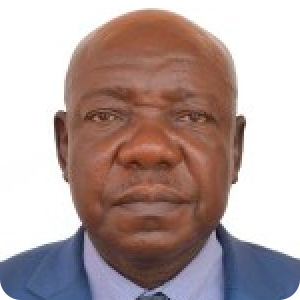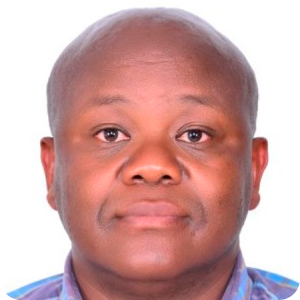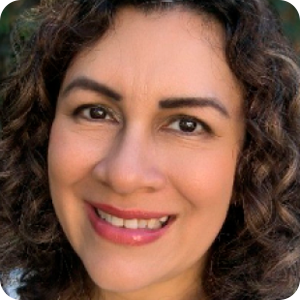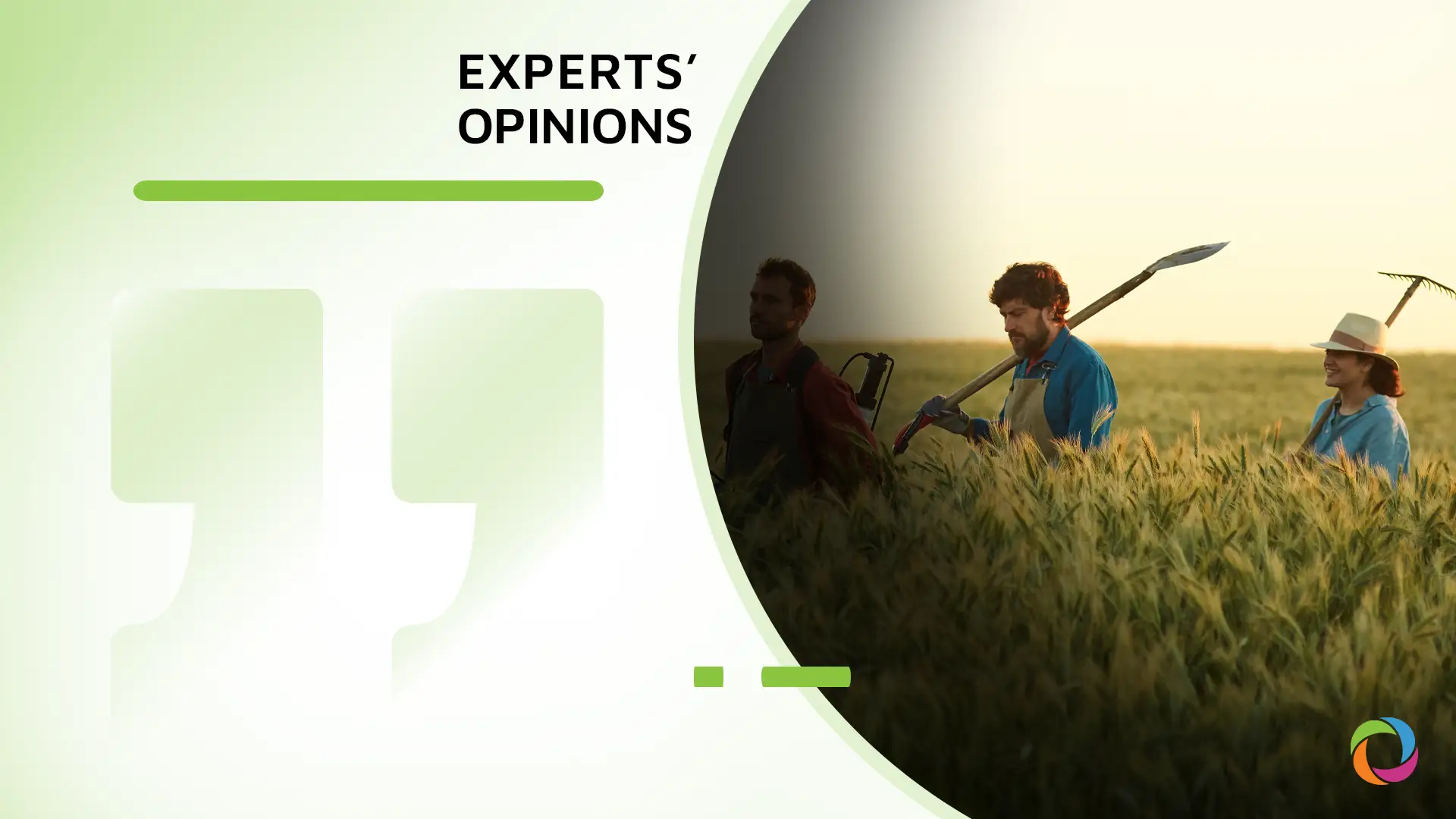With less than five years until the 2030 deadline for their achievement, the SDGs adopted by all United Nations Member States in 2015 are off track. Food inflation rates, which are constantly growing, are pushing vulnerable populations into deeper poverty. Recently, IFAD emphasized to G20 leaders the need to invest more in rural communities, considering that around 80% of the world’s poorest people live in rural areas and rely heavily on small-scale farming. There is an annual US$4.5 trillion global funding gap for achieving the SDGs, and investments in rural communities could help to bridge this gap. Will this be a reliable solution to improve the current situation? Check out some experts’ opinions below.
Key Takeaways:
- Around 80% of the world’s poorest people live in rural areas and rely heavily on small-scale farming and vulnerable food systems.
- According to experts, strengthening climate-resilient infrastructure, improving market access, and promoting inclusive food systems can raise incomes, reduce inequality, and enhance food security.
- G20 leaders and development banks should integrate rural transformation into their core strategies, using co-financing, blended finance, and risk-sharing guarantees to attract private capital.
- Policy and financial innovations such as digital inclusion, flexible microcredit, decentralized capacity building, and localized partnerships will be vital to accelerate progress.
DevelopmentAid: How can targeted investments in rural communities help to close the US$4.5 trillion annual global funding gap for achieving the SDGs?

“Investing in rural transformation delivers high returns, with each dollar generating up to 16 times its value in social and environmental benefits. These include improved nutrition, climate resilience, gender equality, income generation, and ecosystem services, all contributing to key Sustainable Development Goals (SDGs). Small-scale farming supports up to 80% of the world’s poorest people. Strategic investments can enhance productivity, reduce hunger (SDG 2), create jobs (SDG 8), and stimulate rural economies (SDG 1), driving inclusive growth. Early investment in resilient food systems also reduces the need for costly humanitarian responses to crises, helping to shift resources toward long-term development. Since many smallholder farmers are women, rural investment also promotes gender equality (SDG 5), education (SDG 4), and stronger local governance (SDG 16). Overall, rural transformation is a smart, ethical, and cost-effective path to sustainable development.”

“Close the SDG chasm one repayable pump at a time. So long as the world bleeds US$4 trillion a year in unmet SDG finance, abstract exhortations will not do. The good news is that the cheapest progress still starts at the farm gate, provided the money is lent, not gifted. Why loans beat giveaways: Field experiments from Uganda and Ghana show that when smallholders must repay even at soft rates, they buy more seed, maintain equipment, and harvest larger surpluses than neighbours who are handed an equivalent grant. The obligation to repay turns a solar pump into my pump, short-circuiting Garrett Hardin’s “tragedy of the commons”, where unpriced resources get strip-mined by free-riders. Scale that discipline, and the arithmetic gets interesting. Redirecting a mere 15% of today’s US$540–635 billion in distortionary farm subsidies into small-ticket, repayable rural loans would mobilize more fresh capital than any shiny new global fund since Paris. Because the cash revolves, every dollar works several harvests before it retires.”

“In most developing countries, 70- 80% of the population is employed in agriculture, with more than 90% of these termed ‘small-scale farmers’. However, the education system in these economies does not match the agricultural skills that need to translate small-scale agricultural production to productivity and further to large-scale production. I believe there needs to be a reengineering of the education system that will build the skills of youth in school or out of school to solve the challenges in the agriculture sector. Community training schools likewise need to function with plausible solutions to challenges that small holder farmers face. Access to affordable technology needs to be streamlined, and the support systems to maintain these technologies. The cost of production vs productivity in a typical small holder farm is too expensive as the margins achieved out of their production are quite minimal for them to invest in technologies that can advance their farming systems.”

“Small-scale farmers produce one-third of the world’s food yet receive less than 1% of climate finance. Targeted investments – especially in agri-small and medium enterprises (SMEs) and inclusive food systems – can unlock productivity, resilience, and market access. IFAD’s programs in Uganda and India show that blended finance and value chain integration can multiply impact: KAMCO and Enimiro, for example, leveraged modest funding to scale operations, improve farmer incomes, and promote sustainable practices. Agriculture-led growth is twice as effective in reducing poverty compared to other sectors. By channeling capital into rural MSMEs and food systems, we can generate up to 16 times returns in social and environmental benefits, helping to close the US$4.5 trillion SDG funding gap.”

“Investments in rural communities, particularly small-scale farmers, are among the most impactful for advancing SDG progress. Strengthening climate-resilient infrastructure, improving market access, and promoting inclusive food systems can raise incomes, reduce inequality, and enhance food security. Even a small share of the US$4.5 trillion funding gap, strategically allocated, could trigger systemic change in rural economies.”

“Investing in rural communities, particularly small-scale farming and food systems, is a highly effective strategy to bridge the SDG funding gap. Smallholder farmers, who produce a large share of the world’s food, are central to poverty reduction, food security, and climate resilience. Well-targeted investments in rural infrastructure, extension services, agro-processing, and inclusive value chains can generate substantial returns: up to 16 times the original investment in combined social and environmental benefits. Moreover, such investments reduce inequalities, create jobs, and stimulate rural economies, while also addressing climate and biodiversity goals. By prioritising rural transformation, governments and development partners can simultaneously advance multiple SDGs and deliver high-impact results and attract blended financing. It is one of the most efficient and inclusive pathways to accelerate progress globally.”

“Targeted investments in rural communities – especially smallholder farming and food systems – offer a catalytic solution to narrowing the US$4.5 trillion global funding gap for the achievement of the SDGs. By promoting pro-nature value chains, leveraging local resources for additional impact, and strengthening farmer capacity, these investments can unlock productivity, economic inclusion, and environmental regeneration. As farmers graduate from subsistence to sustainable enterprise, they begin to repay catalytic capital and reinvesting in others, creating a self-reinforcing model of inclusive growth.”

“Targeted investments in rural communities and small-scale farming can generate high returns – up to 16 times in social and environmental benefits for every dollar spent. This multiplier effect comes through diverse channels: boosting income and job creation, enhancing climate resilience, reducing hunger and inequality, and empowering women and marginalized groups. Since 80% of the world’s poorest people live in rural areas, strengthening these communities is directly linked to lifting millions out of poverty and advancing many SDGs at once. Investments in rural food systems increase productivity, promote sustainable practices, and enable small producers to access broader markets and modern technology, thereby driving wider economic growth, food security, and environmental sustainability.”

FemPower Latam Leadership Ambassador for India (2025-26) Global South
For Agri-food transformation and Rural Empowerment
“To begin with, inequities in the disproportionate access to financial resources for small-scale and marginal farmers needs to be addressed, especially for vulnerable communities, women, and youth facing societal and systemic barriers. The use of AI-powered equity trackers could be useful here. The idea is to understand groups, regions, geographies, gender and community equity imbalances. Alternative pathways for understanding the systemic gaps through non-traditional data and context-based cultural analysis could also be adopted. Further directing strategic investment in capacity building, agro-education and STEM skills would be critical. This means diversifying food reserves, supporting research into climate-resilient crops and supporting innovations in agri-tech. Thriving amidst climate change, geo-political uncertainty, trade wars, unpredictable tariffs and emerging technologies requires G20 leaders and banks to build local resilience, drive regional cooperation, and look beyond short-term crisis management to long-term food security, inclusive growth and more regional collaboration.”

“Maybe stop repeating patterns that don’t work to avoid the risk of identical results. I come from a rural farmer background, and I finally understand its operating patterns and also its self-sabotage. It is essential to insert new levers of inner transformation that will consist of creating new fields of authorization; otherwise, the brain that is conditioned and programmed will repeat the same patterns. The brain is programmed to avoid pain and repeat the known, even if the known causes pain, and the first change is at this level to precisely open the authorization.”
DevelopmentAid: How can G20 leaders and development banks coordinate their funding strategies to strengthen rural food systems?

“G20 leaders and development banks can boost rural investment by adopting a systems-based, integrated approach that treats agriculture, nutrition, climate, health, and gender as interconnected priorities. Rural resilience should be considered to be a core focus in development portfolios, not a secondary concern. To mobilize more resources, blended finance – combining concessional, private, and climate funds – can help to de-risk investments and attract commercial actors. Ensuring local ownership is vital, with investments guided by country-led plans and delivered through decentralized institutions that understand community needs. Measuring and reporting the social and environmental benefits of these investments using SDG-aligned indicators can support more informed and impactful resource allocation. Lastly, stronger coordination among G20 members and multilateral development banks is needed. A joint investment platform or task force could align efforts, reduce duplication, and scale up effective financing models for rural development.”

“Low-cost capital investments need to be promoted by financial institutions while appreciating the challenges and risks that small holder farmers experience, for example, promoting financial solutions that are not monetary but address the technology needs of the farmer, with a repayment function that appreciates the return on investment of this small holder farmer. Blended financial solutions need to be upscaled. Increased investment should be put into Research and Development (R&D) and the rollout of this research to small-scale farmers for adoption and adaptation. Furthermore, investments in R&D should be put into other segments of the value chain such as value addition, with an eye that is inclined to support more women farmers to own businesses through engaging in value addition, given the gender constraints at the production level.”

“G20 leaders and development banks must shift from traditional approaches to coordinated, SDG-aligned strategies. The Matera Declaration and the G20 Food Security Framework emphasize inclusive growth, agri-diversity, and territorial development. Public Development Banks, with US$1.4 trillion in annual investments, are well-positioned to de-risk rural investments and stimulate private sector engagement. IFAD’s collaboration with the G20 Agriculture Working Group and the Finance in Common initiative mobilizes capital for smallholders, women, and indigenous communities. By integrating food systems into national recovery plans and leveraging platforms like the Global Alliance Against Hunger and Poverty, G20 leaders can drive systemic change.”

“G20 leaders and development banks should integrate rural transformation into their core strategies, using co-financing, blended finance, and risk-sharing guarantees to attract private capital. Aligning investments with national food security plans and community-led priorities will ensure sustainability and long-term impact.”

“G20 leaders and development banks should embed rural transformation into the heart of their funding strategies. This means prioritising investments that strengthen rural food systems, enhance resilience, and empower small-scale producers. Development banks can align funding by scaling blended finance instruments, integrating climate and nutrition co-benefits into project design, and partnering more closely with local institutions and producer organisations. Greater impact can also be achieved through shared rural investment targets, improved coordination across institutions, and the transparent monitoring of rural outcomes. National and multilateral banks jointly mobilizing their US$2.5 trillion in annual investments can unlock large-scale benefits if rural systems are treated as a cornerstone of climate action, food security, and inclusive development.”

“G20 leaders and development banks are in a unique position to close the SDG funding gap by maximizing the impact of their US$2.5 trillion in annual investments. Greater alignment can be achieved through:
- Directing more capital to rural infrastructure, climate-smart farming, and local value chains.
- Leveraging national and multilateral banks to provide accessible finance, risk mitigation tools, and technical assistance for small-scale producers.
- Ensuring development funding prioritizes resilient, equitable rural food systems, echoing IFAD’s call to mainstream rural investment in global development strategies.
- Fostering public-private partnerships to promote technology adoption, logistics, and training in agriculture, thus multiplying the social and environmental returns and ensuring coordinated, scalable impact.”

“Last year’s G20 MDB Reform Roadmap (the G20 Roadmap towards Better, Bigger and More Effective Multilateral Development Banks, a 16-page consensus document formally endorsed by G20 Leaders at the Rio Summit on 19 November 2024) finally acknowledged what practitioners have been screaming for decades: risk, not ideas, blocks rural projects. The document invites each multilateral bank to earmark a slice of its paid-in capital for catalytic, first-loss guarantees. Take that seriously, 5% is the number whispered in board corridors, and you give the World Bank Group alone a US$5 billion shock absorber big enough to crowd in three to four times as much private money. But alignment is about plumbing as much as politics. Two upgrades would change the flow rate overnight: one rural-food-systems taxonomy. Force every MDB to tag loans by soil-health gains, women’s income, and avoided carbon. Dollars go only to projects that tick all three, not to concrete monuments. Municipal backbones under the Sendai flag. The culvert that saves a village from the next flash flood is a public good; so is the market shed that stops tomatoes from rotting on day two. Grants and long-term municipal loans for such shared infrastructure, explicitly endorsed by the Sendai Framework’s call for local empowerment, should sit on city balance sheets, not farmers’. The private money then rides safely on that backbone.”

“For meaningful impact, G20 leaders and development banks must shift from short-term aid to long-term, blended finance models that de-risk investments while building local ownership. Strategies that are aligned with grassroots priorities and nature-positive outcomes will ensure sustained social and environmental returns.”

FemPower Latam Leadership Ambassador for India (2025-26) Global South
For Agri-food transformation and Rural Empowerment
“A blended Public-Private Partnership (PPP) model for bio-agro economies would be a starting point. Strategic multi-stakeholder collaboration can address:
- Knowledge, capacity, and financial gaps to strengthen livelihoods and economic sustenance. Investment in addressing business planning, development, entrepreneurship, business incubation, innovative food labs, resilient food supply chains and simplified climate adaptation strategies should be encouraged.
- Strengthening food safety. Supporting post-harvest hygiene practices, developing storage facilities that prevent bacterial growth or minimizes exposure to toxins. Moreover, transparency and training in retailing and food labelling especially for traditional foods which is often lacking and prevents consumers from making informed choices, among other practices could be supported. Basically ensuring safety protocols at every stage of the food chain to minimize food loss and resource wastage.
- Financial training & leveraging AI tools. A general lack of awareness and often mistrust of financial institutions has been observed. This prevents the adoption of valuable digital infrastructure products. Addressing this with more training and exposure to credit scoring algorithms, crowdfunding, supply chain resilience, price demand fluctuation analysis, and digital agri wallets could be looked into. For example, Fintech and Agri DFS, Digi Farm Village advisors, Hello Tractor (tractor sharing service), efficient cost-effective AI tools for enhancing shelf life of goods, reducing food wastage, simplifying complex legislative, regulative guidelines, among other resources could be explored.
- Government interventions and regulatory changes to improve financing and access. Further simplifying language, tools, steps for a wide audience, including those with low literacy levels for more diversity and inclusivity.
- Improving transport and infrastructure accessibility for farmers with limited connections to external markets. Additionally, addressing affordability linkages and optimising transport routes for them would be helpful.
- Co-creating solutions for environmental and social justice by developing climate-resilient digital tools that promote sustainable practices in soil, water, and ecology management, supporting both the environment and local communities in the long-run.
We are navigating a volatile and unpredictable landscape globally. Economic crises, civil wars, strife, conflicts and climate disasters are recurring. Global leaders and development banks are positioned to play a more proactive and defining role in mitigating and overcoming these challenges. Their support in job creation, food security, nutrition, building local resilience, strengthening diverse cooperative partnerships, intra-regional trade and collaboration is more important than ever.”

“If it were just a matter of strategy, everything would be perfectly fine today. But we need to work upstream of the strategy, on attitudes or more precisely on the inner state being based on limiting thoughts and beliefs and toxic emotions. And from there, new inner spaces will be created for new experiences and according to a strategy to adapt.”
DevelopmentAid: Which financial innovations could lead to greater investments in rural areas and small-scale farming?

“Mobilizing capital into rural and small-scale farming systems requires targeted policy and financial innovations. Agri-fintech platforms – including mobile banking, digital credit scoring, and blockchain –can enhance access to finance, reduce costs, and improve market transparency for rural farmers. SDG-aligned bonds and impact investing, such as green or sustainable agriculture bonds, can attract ESG-focused investors by linking capital to measurable rural development outcomes. Climate-smart subsidies and credit guarantees can encourage investment in resilient and sustainable agricultural practices, including climate-resilient crops and irrigation systems. Public procurement policies, such as government purchases for school meals or social programs, can guarantee stable markets for smallholders and boost rural incomes. Land tenure reforms and policy stability are essential for reducing investment risk and fostering innovation among rural entrepreneurs. Finally, localized investment facilities, such as regional rural development funds, allow the flexible use of donor and domestic resources to respond to local needs. Together, these tools provide a robust framework for scaling rural investment and advancing inclusive, sustainable development.”

“Some of the policies and financial innovations that should be advanced include a clear policy on micro financing that appreciates the high risk of lending to smallholder farmers, and the return on investment to pay back. There should be a streamlined policy on digital financial lending to smallholder farmers, as this reduces the cost of lending. Governments should design subsidy systems that will benefit smallholder farmers. For example, in my country, there is a program focused at improving access to water for production to smallholder farmers. However, each farmer is expected to co-finance 25% of the equipment worth US $4350 – $7000. This subsidy benefits some farmers and not smallholder farmers who cannot afford USD $1087 – $1750. IFAD and all the G20 leaders need to appreciate that the challenges that smallholder farmers face are multidimensional. They need long-term investments and not short-term projects of 3-5 years. Like the saying goes – “Rome was not built in a day” – we need long-term investments that can address the multidimensional challenges among smallholder farmers.”

“Innovations like LandMonitor and DiGi Climate Risk (in Senegal, and Burkina Faso, helping rural producers to adapt to climate change while improving access to finance) are transforming rural finance by improving land tenure data and integrating climate risk into lending decisions. Blended finance tools – credit guarantees, insurance, and concessional loans – de-risk agri-SME investments. Programs like the Programme for Rural Outreach of Financial Innovations and Technologies (PROFIT) in Kenya are transformative and aim to reduce poverty and boost rural livelihoods through financial inclusion and enterprise development.
Funded by IFAD and the Government of Kenya, and managed by the National Treasury, PROFIT ran from 2010 to 2019 and targeted over 287,000 rural Kenyans, including smallholder farmers, pastoralists, artisanal fishers, women and youth, and landless laborers. Key components of the program included Rural Finance Outreach & Innovation, which introduced innovative financial products like savings and remittance services, value-chain financing, community infrastructure loans, and index-based insurance. It also included a Risk Sharing Facility and Credit Facility to de-risk lending to rural clients. Another component was Technical Support Services, which provided Business Support Services and Financial Graduation training, and built capacity for livestock and agricultural enterprise groups, especially in counties like Meru and Isiolo. Program Management ensured the efficient use of donor resources and promoted sustainability beyond the program’s lifespan. The highlights of the program’s impact included improved access to financial services for underserved communities, strengthened asset management and market linkages, boosted employment and productivity in rural enterprise sectors, and support for policy reform in Kenya’s financial sector to better serve rural populations.”

“Innovations such as results-based financing, climate-smart subsidies, and secure land tenure can de-risk rural investments. Financial tools like agricultural insurance, digital credit platforms, and impact bonds can attract more funding while empowering local producers.”

“Unlocking rural investment requires bold innovations. Financially, blended finance, digital agri-finance platforms, and results-based payments can expand access to credit and reward measurable impact. Instruments such as green bonds and climate risk insurance that are tailored to rural infrastructure and farming systems can crowd in private capital. On the policy side, secure land tenure, streamlined regulations, and enabling frameworks for public-private-producer partnerships can reduce the investment risk. Additionally, integrating rural priorities into national climate strategies (e.g., NDCs) can align public and donor funds with long-term rural development goals. Together, these innovations lower barriers to investment, increase accountability, and create enabling environments where rural communities can thrive, and drive meaningful SDG progress.”

“I think that the following policy and financial innovations – along with coordinated action from G20 governments, banks, and development partners – can unlock the flows necessary to transform rural economies and advance the SDGs at the scale and speed required:
- Launching rural green and social bonds to mobilize private capital for sustainable agriculture and community development.
- Implementing integrated food system plans at national and local levels, promoting coherence across funding, regulations, and market access.
- Providing targeted financial incentives (like grants, microloans, crop insurance, and tax credits) and reducing the regulatory barriers for rural businesses and cooperatives.
- Adopting public procurement policies that prioritize purchasing from smallholder farmers, thereby creating steady demand and income streams.
- Using digital platforms, direct market connections, and blockchain for transparency and access, alongside research and innovation support for climate-smart and resilient practices.
- Supporting village savings and loan associations and financial inclusion measures specifically tailored to rural communities, empowering women and marginalized groups.”

“A fresh ‘financial kung-fu’ to unlock rural capital. Blended finance with a real first-loss layer: public investors take the hit if drought strikes; commercial lenders take the coupon. The World Bank’s agriculture chief now touts these structures as the quickest route to scale.
- Merit-based, inclusive award windows: Grants are not banned, but they must be earned. Women’s co-ops, youth fishing collectives or indigenous producer groups that hit pre-defined yield or carbon targets win concessional top-ups. Performance, not patronage.
- Diaspora ‘micro-green’ bonds: Tokenized notes in US$25 slices allowed a nurse in Berlin finance a cold-chain start-up in Machakos without the exchange-rate headache.
- Parametric insurance bundled with credit: An automatic pay-out after a failed monsoon keeps farmers current on their loans and lenders calm, again, discipline without cruelty.
- Subsidy-swap trust funds: Treasury shifts 10% of its fertilizer budget into a resilience pot; donors match it; the pool underwrites village-scale solar pumps. Everyone sees the ledger; no one can raid it for elections.
The punch line: When money is borrowed and not bestowed, farmers and fishers treat it like capital, not charity. Backstop that risk with MDB first-loss windows, stitch it to Sendai-compliant municipal infrastructure, and redirect just a sliver of existing subsidies. The result? Rural people own their progress, investors sleep at night, and the US$4-trillion hole shrinks by one repaid loan and one flood-proof culvert at a time.”

“Policy and financial innovations such as digital inclusion, flexible microcredit, decentralized capacity building, and localized partnerships are critical to accelerating progress. Mechanisms like pay-for-results and climate-linked bonds can further attract impact capital while holding systems accountable to SDG outcomes. When rural investments are designed for empowerment, equity, and resilience, they transform communities from being aid recipients to being agents of sustainable development – delivering lasting change for people and the planet alike.”

FemPower Latam Leadership Ambassador for India (2025-26) Global South
For Agri-food transformation and Rural Empowerment
“Different types of innovations (technological, social, policy, institutional, and financial) have to go hand-in-hand to achieve sustainable development. Ranging from drones for data capturing, advances in seed pods, light or animals range detectors, data analytics for precision farming, crop monitors, blockchain traceability, predictive analytics to optimize farming, to name a few. However, the policies are somewhat fragmented and not integrated. There is no clear regional strategy for explicit cross-sectional integration that could augment the implementation and impact of such tools. We are living in a world where local knowledge is global treasure. Yet enough local narratives and best practices are not mainstreamed or even discussed on public platforms. There is a need to scale-up indigenous knowledge systems and integrate community-centric practices in policies, national resource centers and educational curriculums. Building an innovative tool box with traditional resources, as well as, new evolving ones would enhance the approach. For example, in Uttrakhand (India), turmeric or ginger was sown in arid soils and often done using indigenous seed cycling, cow by-products was used as organic fertilizers, and insect repellents. There are plenty of similar (simple) easy-to-use, yet powerful sustainable agri food interventions being successfully used across the world. Moreover, AI tools could be used to feature multi-lingual dashboards and showcase diverse cultural perspectives including sharing more opportunities, information exchanges, marketing linkages, and offer trainings in better farm management techniques. The idea is to ensure food security, increase the demand for traditional foods, support stronger regional cooperation and encourage more forward-thinking community-driven policies.”
See also: Advantages and limitations of agroforestry | Experts’ Opinions
Rural development is a sector full of perspectives as it is directly linked to achieving the Sustainable Development Goals, poverty reduction, and climate resilience. That being said, investments in rural areas are not just a development priority, but also a career hub for professionals. With the DevelopmentAid job board, experts can find thousands of job openings in international development, filtering them by sector, location, type and years of experience. These jobs can also be found by constantly scrolling on different organizations’ websites but, to save time on searches and to avoid losing any opportunities, there is the Individual Professional Membership. Aside from access to jobs, members can find tenders and grants for individuals, the contact information of the largest donors and organizations in the fields, check salary trends, increase their visibility and benefit from other valuable tools. It is like a seed that, once planted, will flourish into increased chances to stand out in a competitive international development market.

